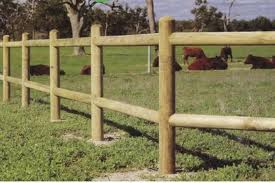Here’s a straight forward wooden balau deck we built in Kloof, Durban in October 2018. There were a few angles that had to be cut precisely to finish it neatly but other than that the deck was straight forward to build.
We used an H3 and H4 CCA Treated pine substructure. Because the pine is S5 (Industrial SABS approved grade) it is strong enough to be used as a structure for various building purposes. It is also relatively inexpensive in comparison to other hardwoods that could be used as decking structure. Being S5 it contains a certain amount of knots per square metre and is therefore SABS approved as structural timber. Timber with more knots per square metre is normally used as knotty pine ceiling boards where there is very little structural pressures on the timber. Timber with less knots per square metre is referred to as semi clears or S7 grade. S7 becomes quite expensive and is used as deck boards at times to eliminate knots failing on the deck surface. However because one would need to use twice as much wood (38mm thick) when using pine deck boards, the cost is the same as using a 19mm x 68mm balau deck board at half the quantity of wood. As such we use 19 x 68mm yellow balau deck boards as the surface for most of our wooden decks in Durban. The balau is far more stable being twice as dense and hard with a regular straight grain and as such these balau deck boards don’t twist, cup or bow as easily as pine. With the pine being H3 CCA treated it has a life span of at least 50 years outdoors in the rain and weather.
We added a small flight of open riser steps to this deck to gain access to the garden. These are done in full solid balau using 30mm stock. Normally the stringers are 30 x 215 and the treads are made of multiple pieces of 30 x 102 with cleats fixed to the stringers and the treads are fixed to the cleats. They don’t work that well in pine as the pine becomes very visible throughout and one ends up cladding it anyway which brings the cost back to the same as solid balau. The alternative to open risers steps is to do closed risers where box type steps are made of pine structure and then clad resulting in the riser being closed.
The screw holes of all our decks are counter sunk with a Kalgard decking screw and filled with a clear epoxy and saw dust mixture to match the colour of the wood and then ground flat and sanded smooth prior to oiling the deck. You’ll find other articles on this site where we discuss the pros and cons of using oil vs other finishes available on the market and leaving the deck to naturally grey and weather. If you use the search bar at the bottom right and search for maintenance you’ll find a complete article on deck maintenance.
For a free no obligation quote on your wooden deck in Durban and surrounding areas, please use the contact us form below or you can call us on 082 496 5444.



















